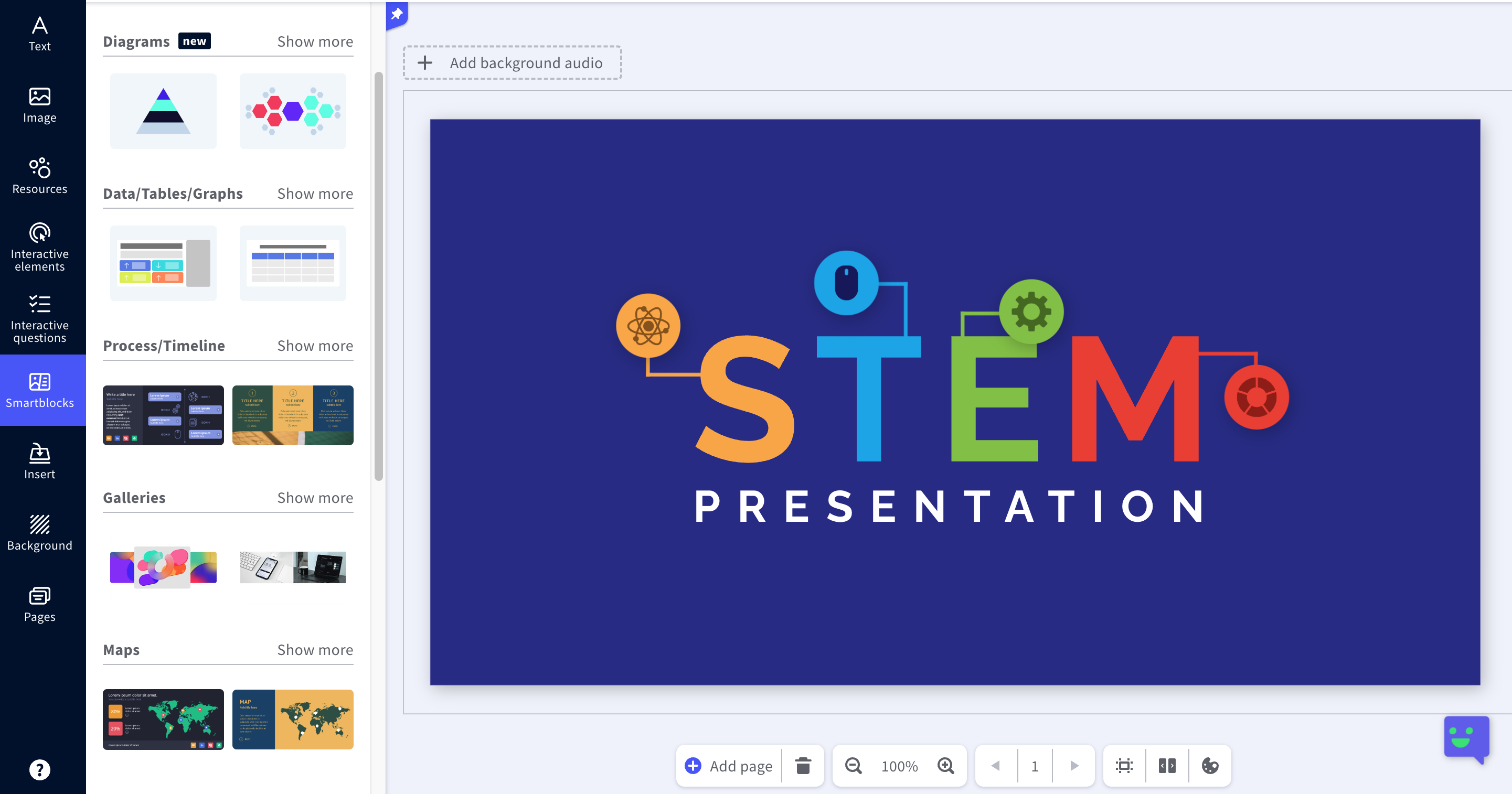


Genially is an online content building tool designed to create interactive learning objects that can be embedded into Canvas pages. Content built with Genially provides variety and engagement for students through non-linear access to content. Genially brings the ability to add a three-dimensional quality to content through pop-up windows using a layered method thereby supporting a “less-is-more” approach than traditional lecture slides.
Interactive learning is active learning. Active learning is any instructional method that engages students in the learning process. Active learning requires students to do meaningful learning activities and think about what they are doing while they are doing it (Prince, 2004). In the online environment, active learning can be increased through interactive presentations that require students to navigate with the platform to access information. Findings of a 2014 meta-analysis of 225 studies in undergraduate STEM courses indicated that average exam scores improved by about 6% in active learning classes vs traditional lecture formats (Freeman, 2014).
Genially is a user-friendly, ‘what you see is what you get’ visual editing tool. Genially sets up content with assorted navigational features. Diagrams, graphics, audio and buttons can be added to the screen via drag and drop features. Interactions such as pop-up windows can then be added to the objects on the screen providing depth to the information. Pop-up windows can include videos and web links in addition to text. Brief audio clips can be added to slides to complement visuals. Document colors may be adjusted to match JHU branding colors. A preview button allows for viewing and revising/refining the presentation prior to publishing.
Consider using Genially for a variety of course content such as:
Genially is an effective tool for representational content such as biological or systems diagrams that lay out the most important components for the student to learn. Another good use of Genially is to explain the flow or sequence of a process or topic. And consider Genially for relational content, such as sharing data to display trends or other relationships between variables such as bar graphs, pie charts, histograms and scatter plots. Once the core content is in Genially, you can create opportunities for students to learn more through the pop-up and rollover windows. Genially, however, is not well-suited for math-intensive content.

You should work with an instructional designer to create Genially presentations for your course. Approaches to getting started with Genially are flexible. Sometimes the best approach is to provide your designer with a Word document of narrative content. Other times, you may draft some preliminary slides. Either way, our team can help!
Why stare at a blank screen waiting for inspiration to strike? Templates are available and are a great way to get started. Or, if you have existing slides, consider importing those as a starting point. Like a template, you can customize and enrich imported materials for unique instructional content.
Genially is improving their accessibility features all the time toward 100% WCAG2.1 compatibility. As they continue that work, we advise that all Genially content be provided in at least one additional format. Generally, that format might include an accessible PDF, PowerPoint slides or content built directly into Canvas.
Visit these examples to experience how Genially interactive presentations can elevate your content. Create a free account or contact an instructional designer to help you get you started.
Course Map Template: http://tinyurl.com/TemplateCoursemap
Facilitating Feedback: http://tinyurl.com/FacilitateFeedback
NanoTechnology Timeline: http://tinyurl.com/NanotechTimeline
Freeman, S., Eddy, S. L., McDonough, M., Smith, M. K., Okoroafor, N., Jordt, H., & Wenderoth, M. P. (2014). Active learning increases student performance in science, engineering, and mathematics. Proceedings of the National Academy of Sciences, 111(23), 8410-8415 .
Prince, M. (2004). Does active learning work? A review of the research. Journal of Engineering Education, 93(3), 223-231.